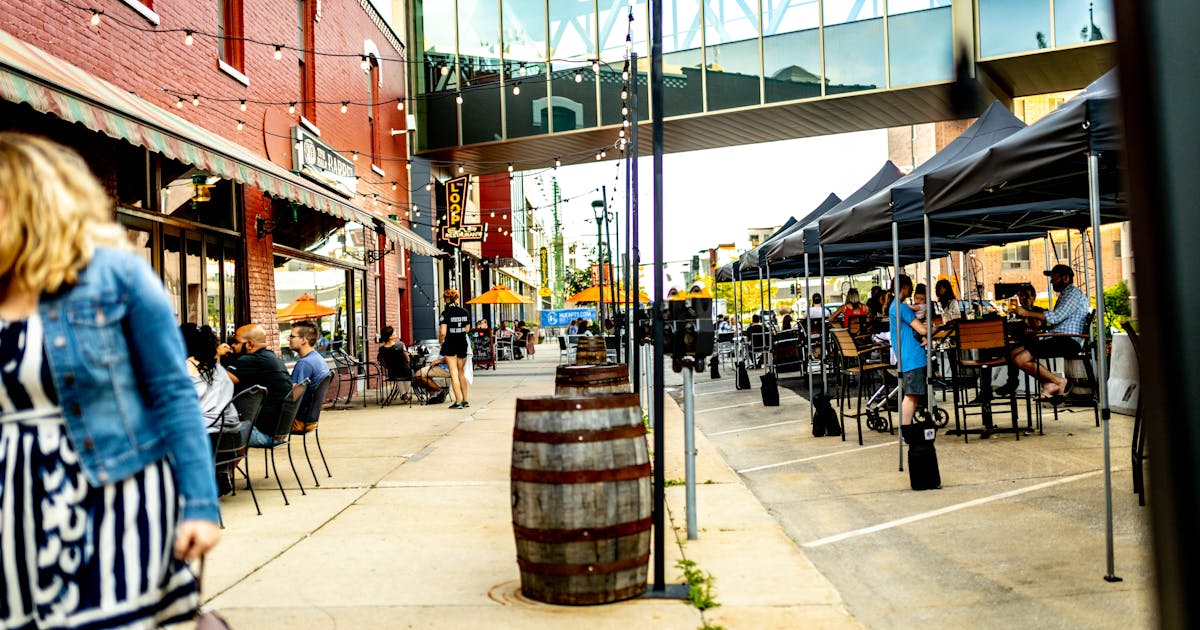The pandemic gave a boost to outdoor dining in Rochester
ROCHESTER — A silver lining from the COVID-19 cloud can be seen on downtown streets and elsewhere in this southern Minnesota city.
The pandemic encouraged al fresco dining, an idea that had slowly gained momentum in recent years.
In 2020, as the pandemic first hit and bars and restaurants faced restrictions on indoor dining, Rochester facilities created more than two dozen outdoor dining spaces, including more than 15 downtown.
They took the form of sidewalk cafes, patios, and “parklets”: terraced structures that occupy the street lane normally reserved for parking.
City planners had encouraged al fresco dining in recent years, but the pandemic has accelerated the process, said Molly Patterson-Lundgren, coordinator of monument preservation and urban design in the city’s department of community development.
“It was the pressure that created the diamond,” she said. As bars and restaurants got the OK to reopen, some dropped their outdoor spaces, but even with the reduction, the city has more than it did before the pandemic, she said.
The Rochester Downtown Alliance (RDA) played a leading role in the effort, working with business owners to help them plan quickly. The city also moved quickly, creating emergency permits and dispatching teams of inspectors to move the process forward.
“It happened very quickly,” said Holly Masek, Managing Director of RDA. “City folk would walk around restaurants and literally sketch [plans] out in chalk.”
The RDA bought more than 200 chairs and tables to encourage street life and offered grants of up to $2,000 to help companies cover their costs, said Karli McElroy, the alliance’s director of operations.
Before the pandemic, there was interest in outdoor dining, “but there wasn’t the urgency,” Masek said.
Minneapolis and St. Paul residents are familiar with the challenges of supporting downtown street life in cities where much of the pedestrian traffic has been shifted to skyways. Rochester faces an even bigger hurdle because the city not only has skyways, it also has subways.
Street dining can be an important ingredient in the recipe for a livelier downtown area, Lundgren said.
“As cities develop over time, they tend to be intensively developed,” she said. “We tend to build upwards rather than outwards. So we have a lot of concrete, we have a lot of very useful spaces.
“The idea of creating a place for people to gather softens this urban environment. They introduce people having a conversation. You can add music, add plants. And it’s starting to make it a more human-centric place, one that’s tough, technical, and machine-centric.”
The RDA is launching several new downtown revitalization initiatives this year. Allianz already sponsors the successful Thursdays Downtown program, a weekly summer festival that brings up to 20,000 people and 100 vendors downtown.
Visitors this summer can expect to see new murals as well as outdoor lawn games, music and art in a redesigned Central Park, McElroy said. The RDA and its member companies are even taking steps to liven up downtown lanes with fairy lights and meeting spaces.
Overcoming the challenges of the pandemic has been a valuable learning experience, Masek said.
“Reminding people to talk to their neighbors and work together was part of that,” she said.
Now the city is revising its alfresco dining ordinances, using lessons learned from the pandemic crash program.
“We were really ready as a city to look at that [before the pandemic] and rather establish a standard policy that we would apply,” Lundgren said. “In many ways, the pandemic has presented us with a scenario where we really needed to focus on specific issues.”


Comments are closed.